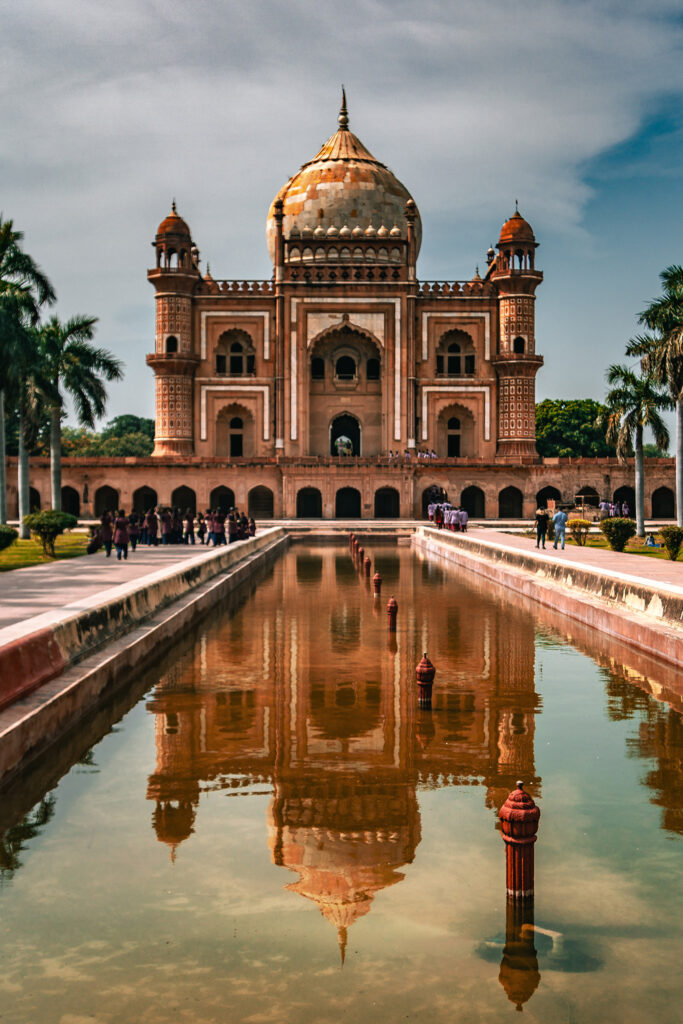
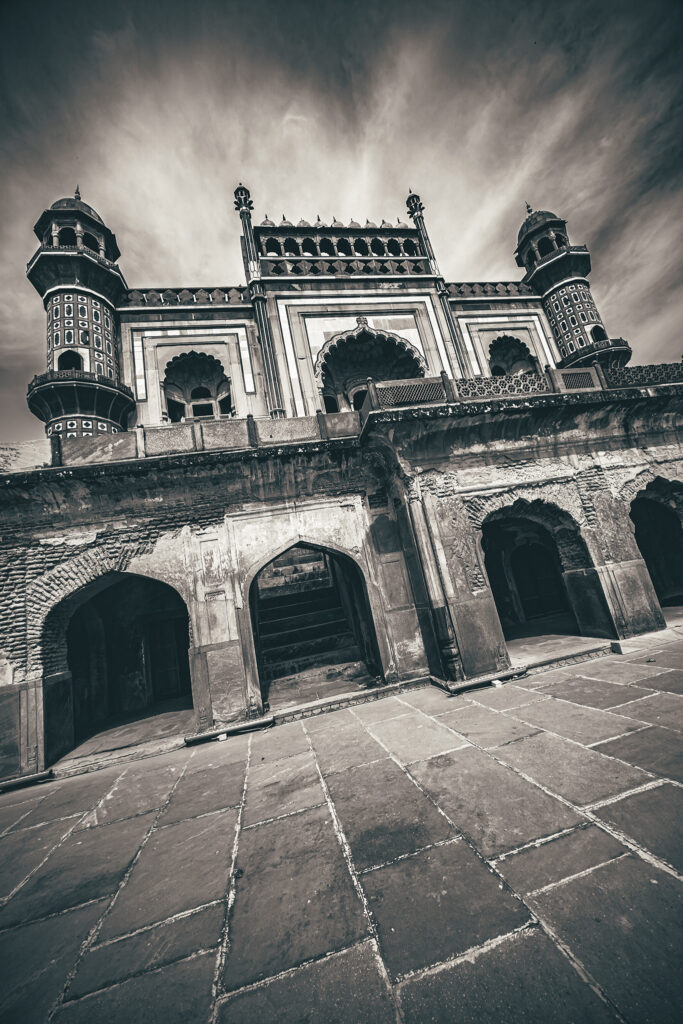
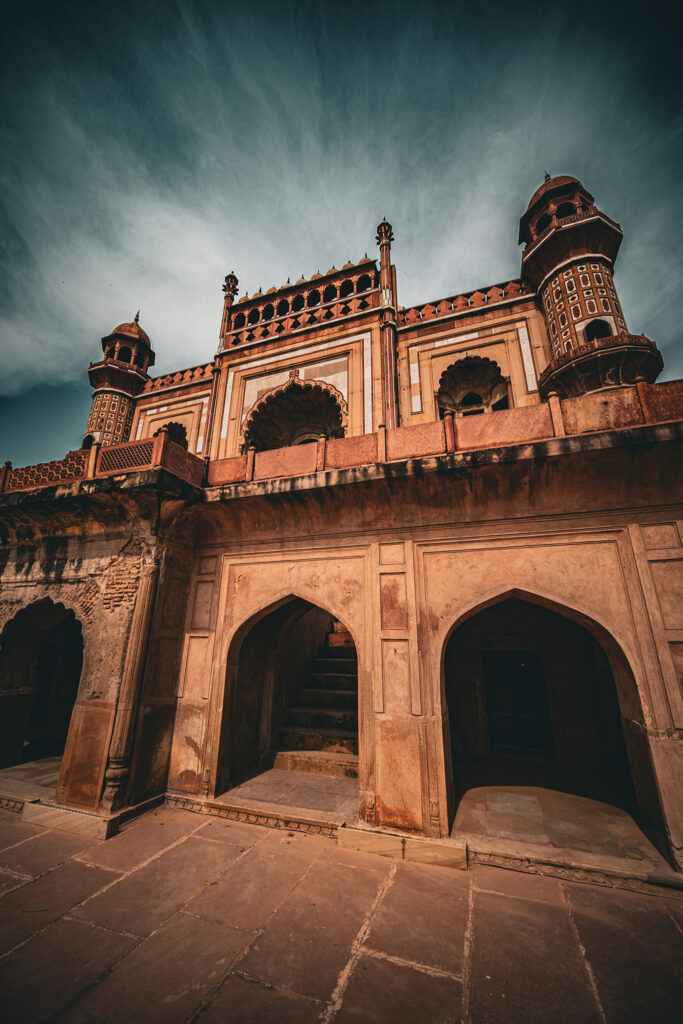
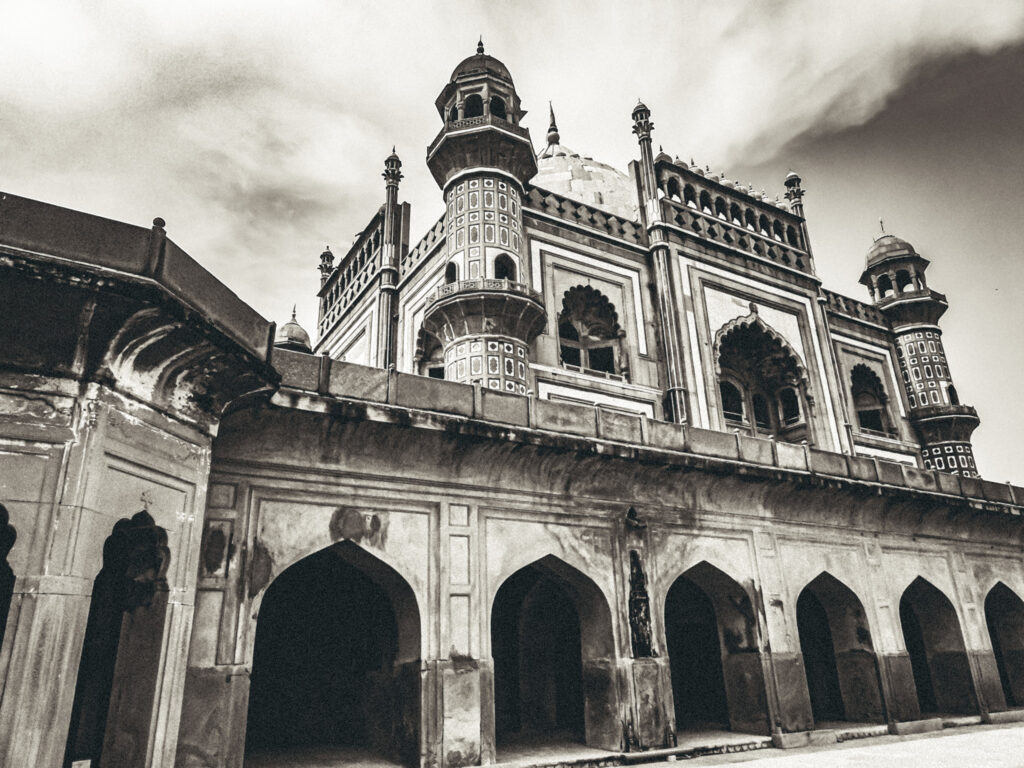
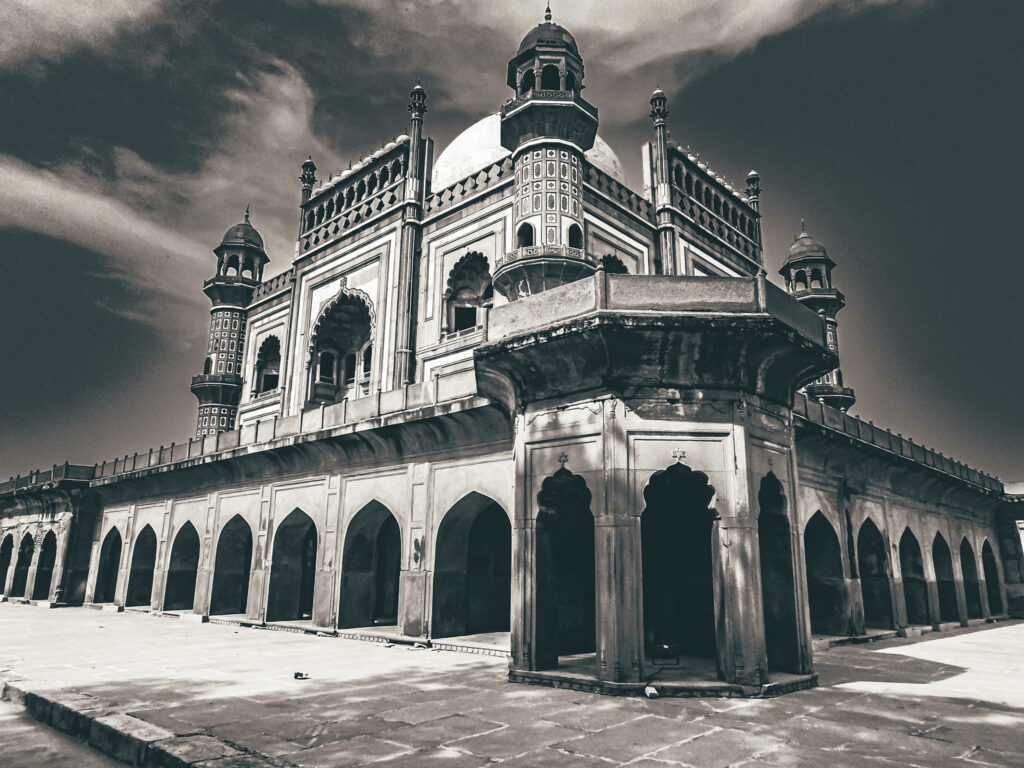
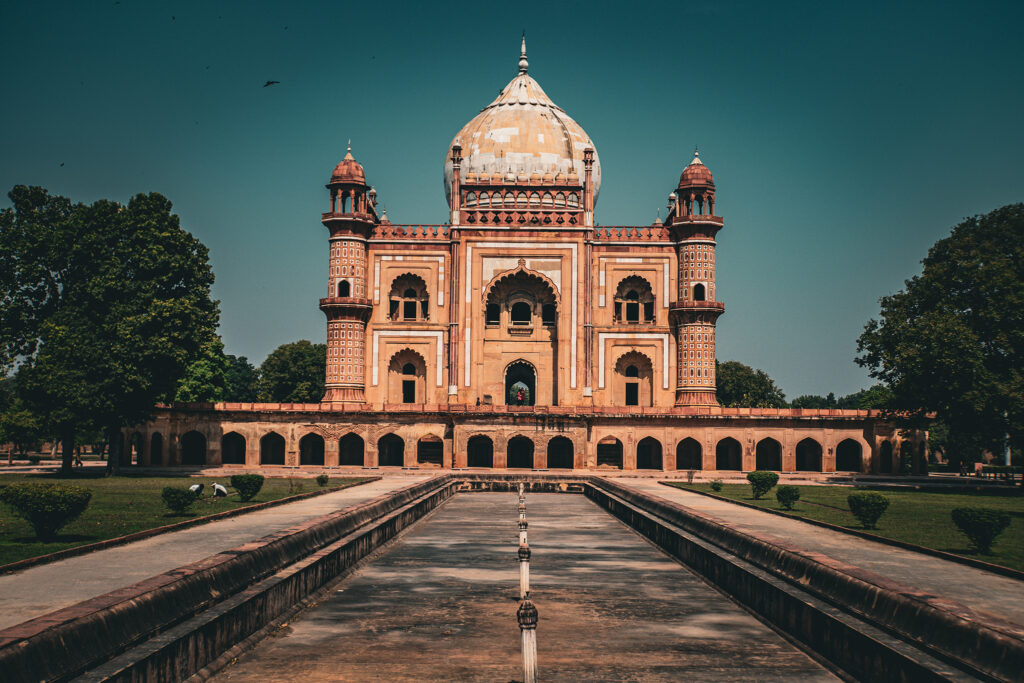
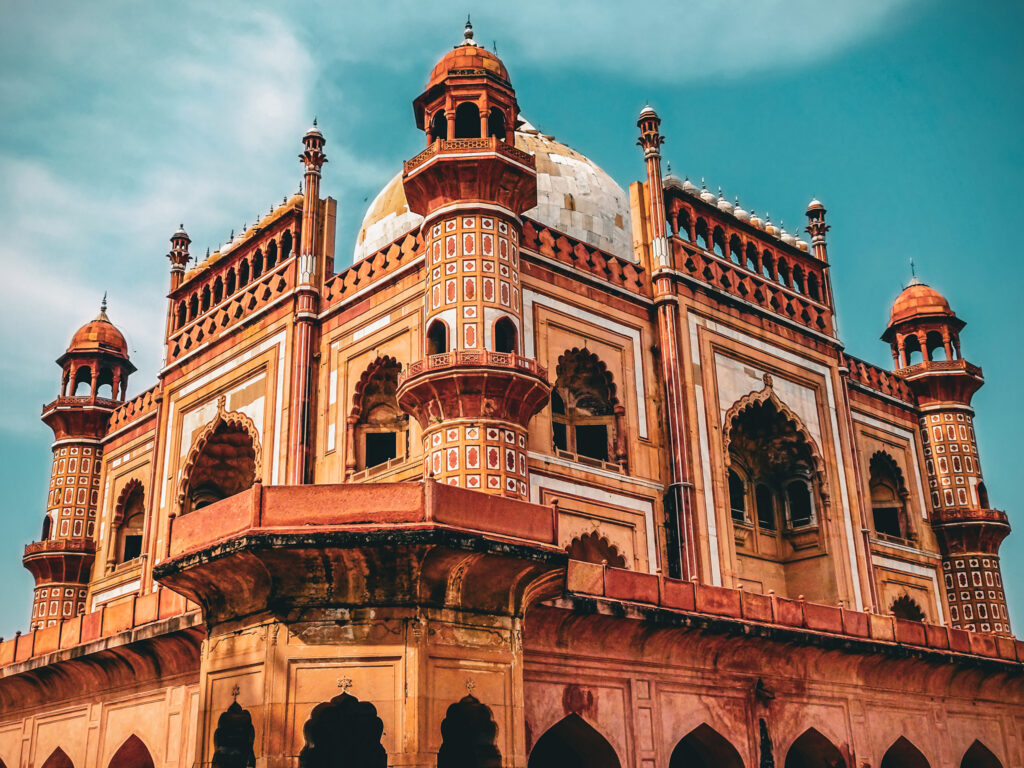
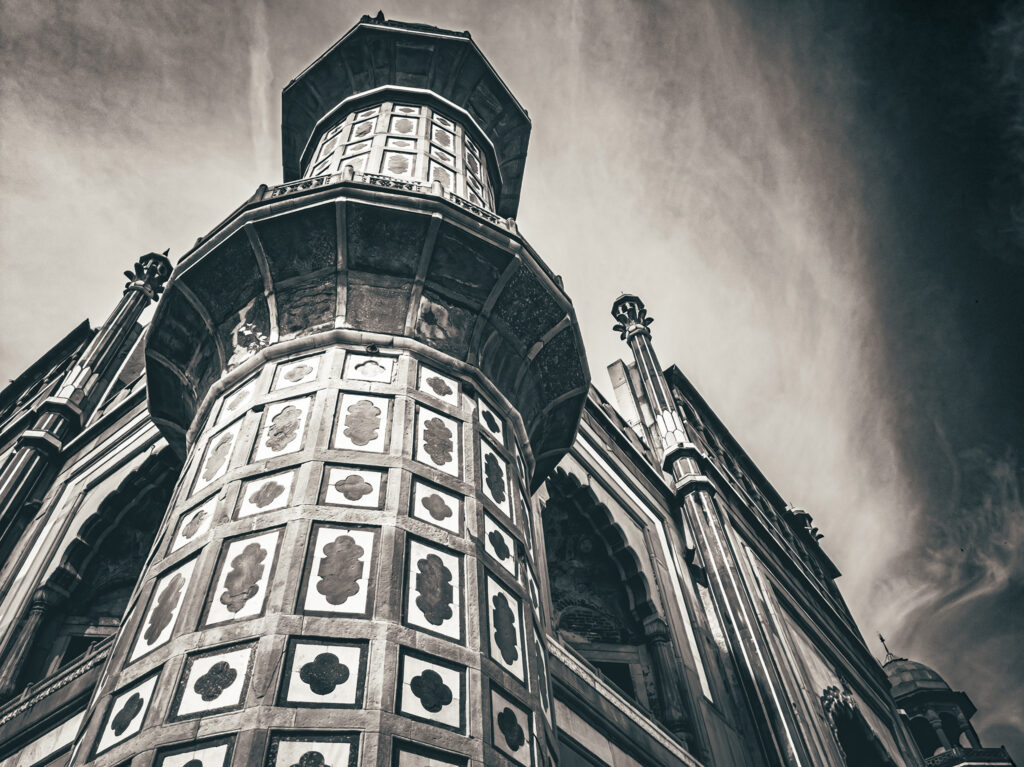

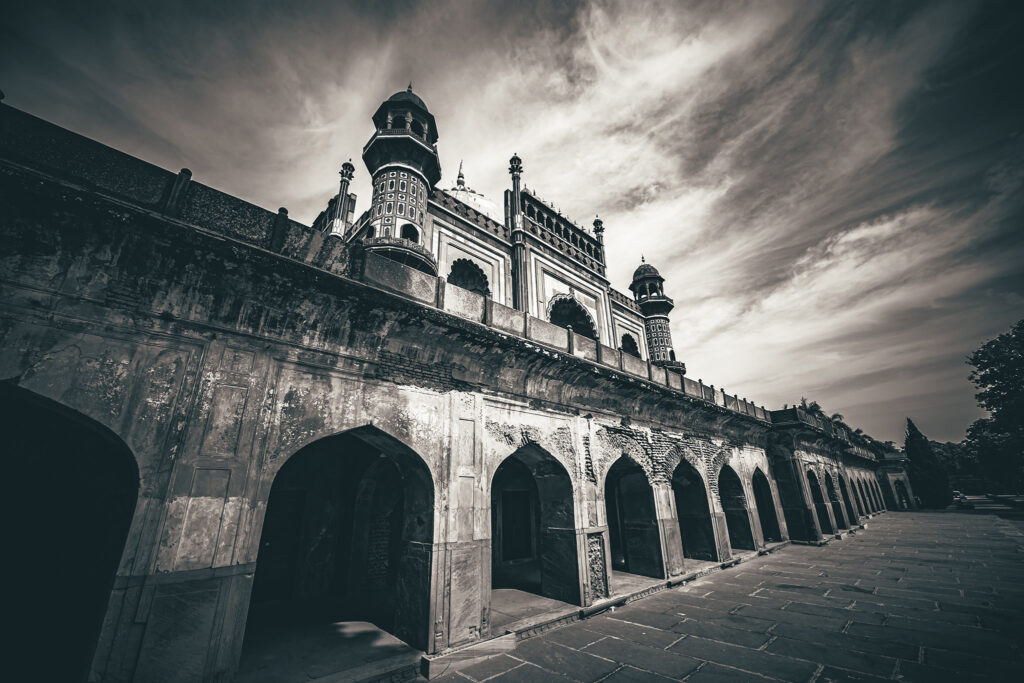
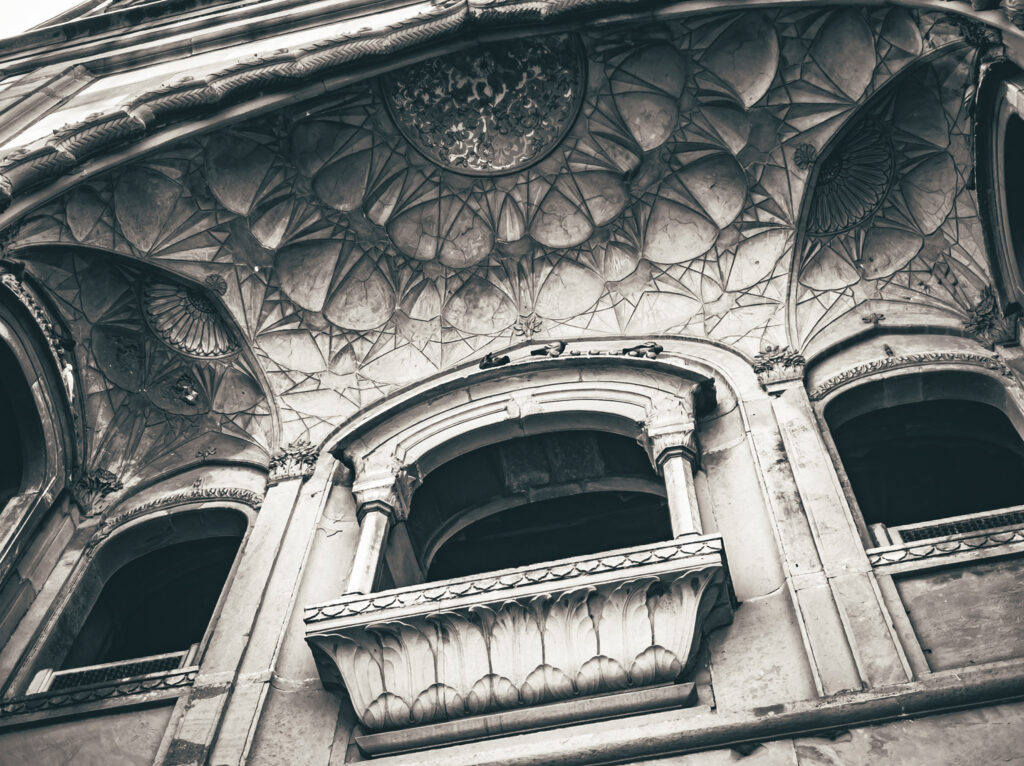
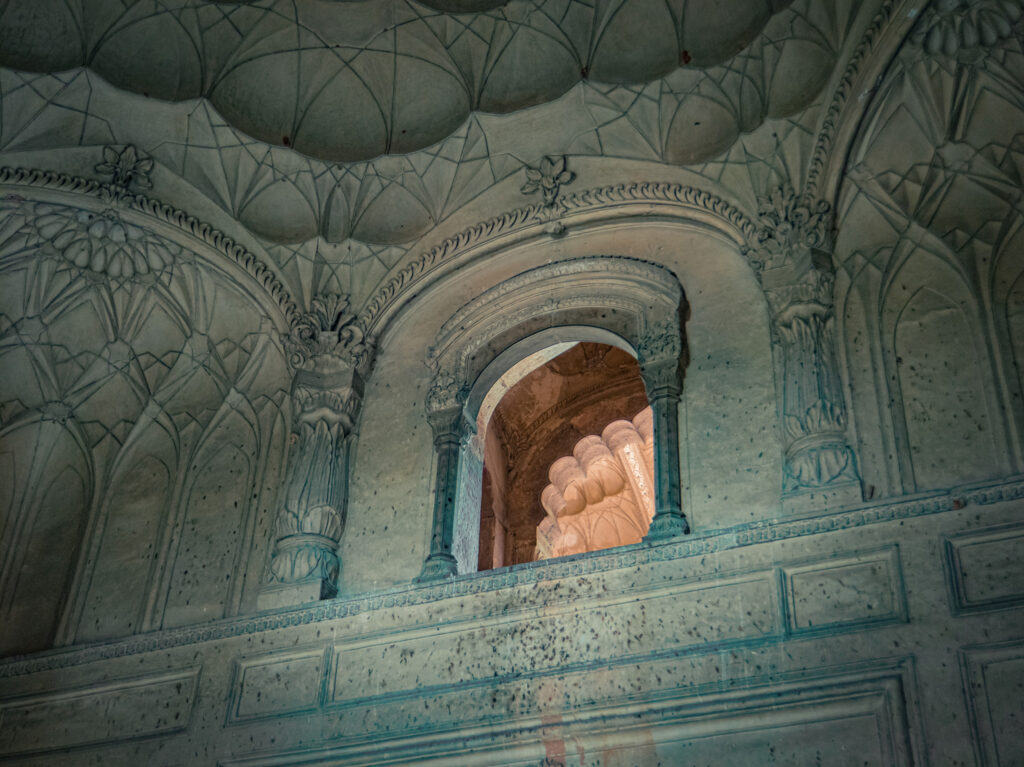
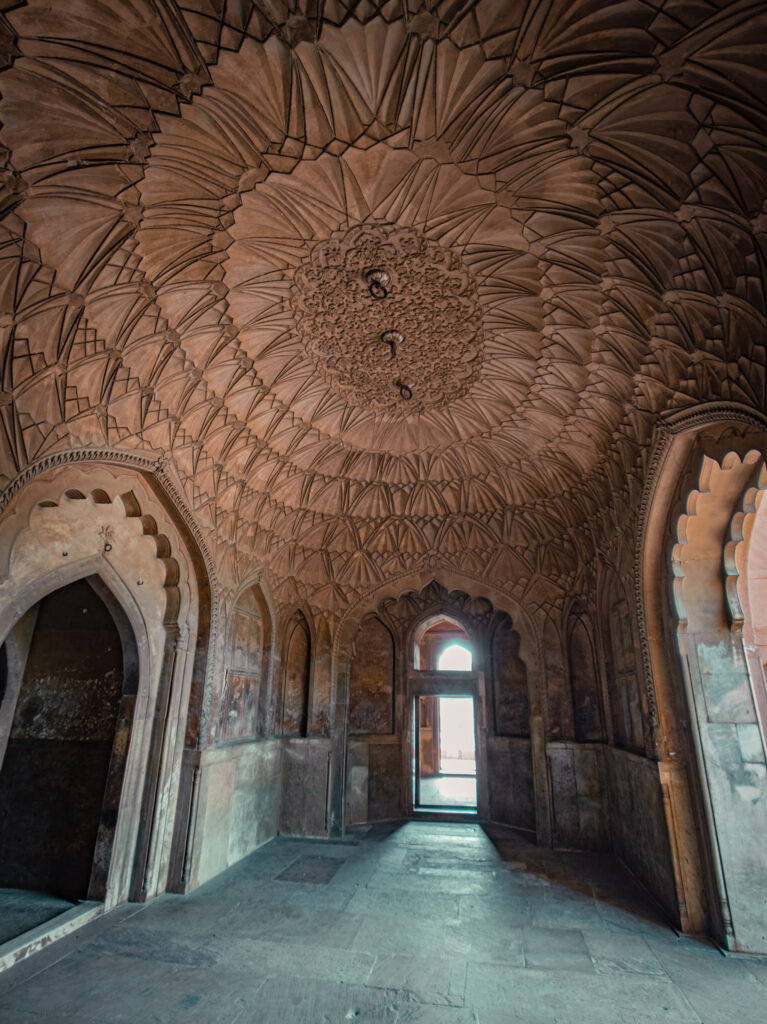
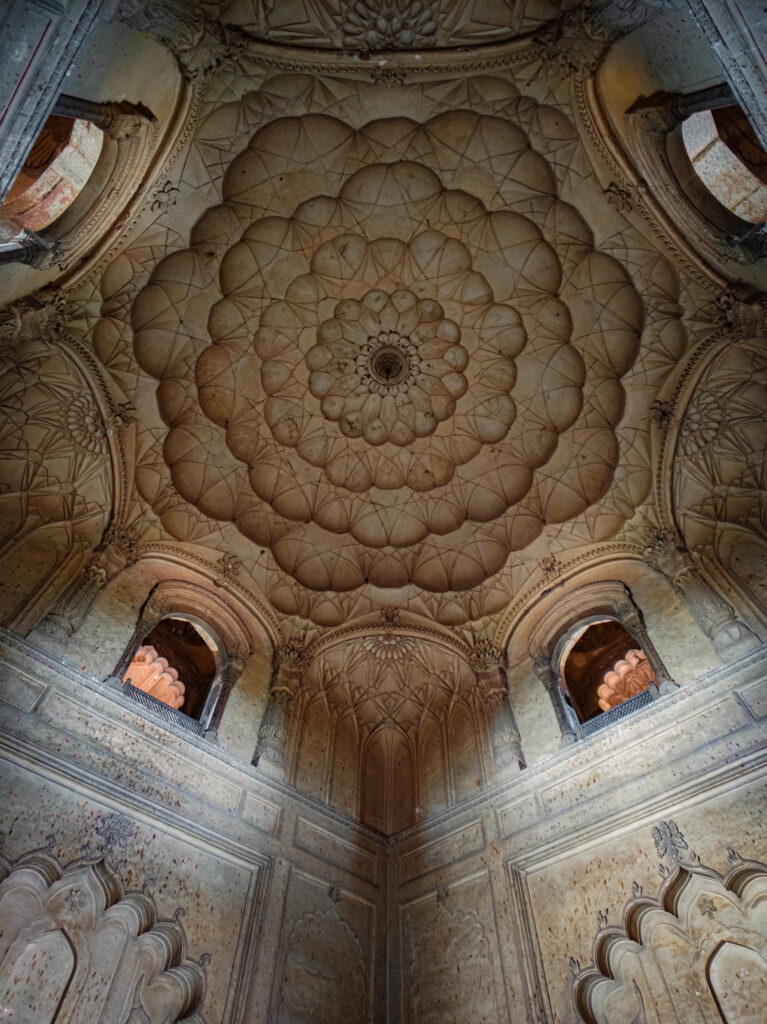
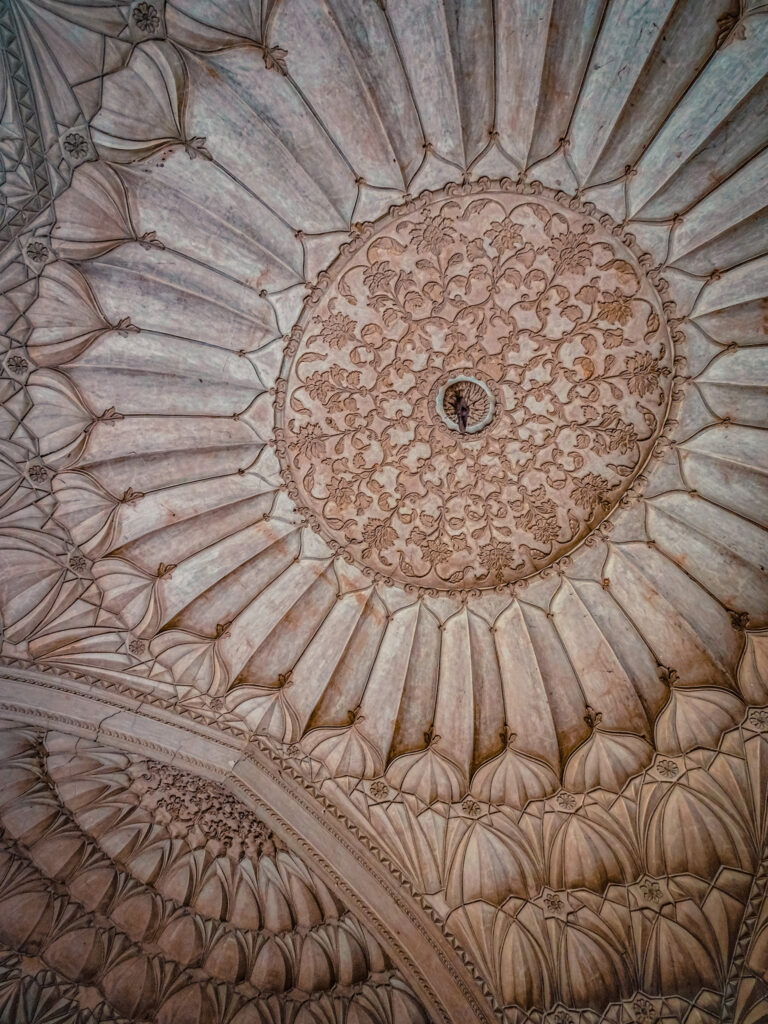

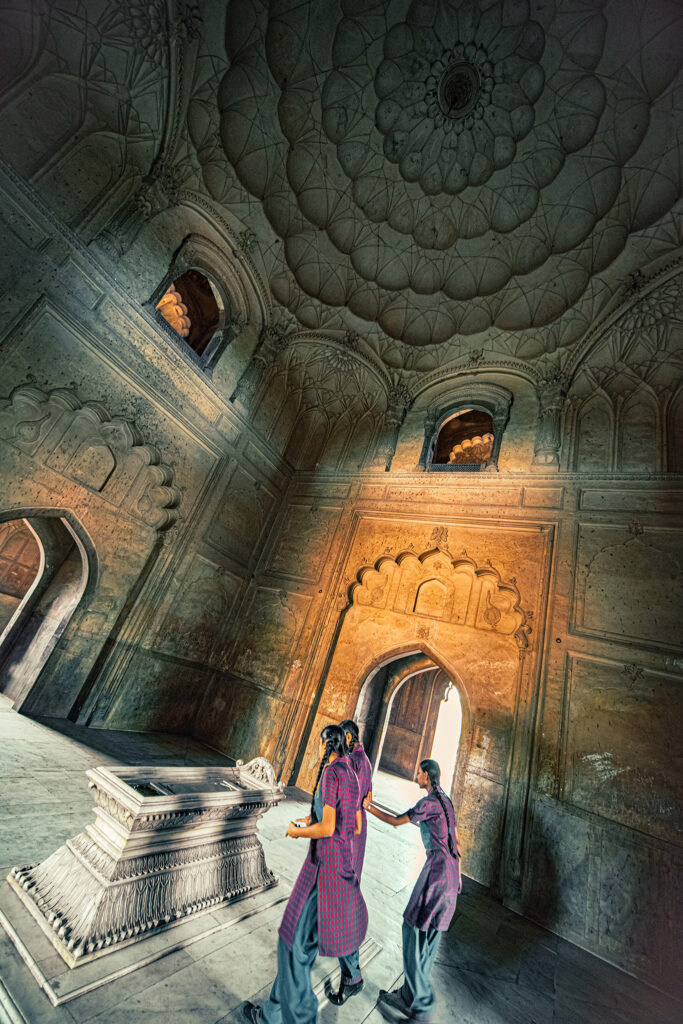
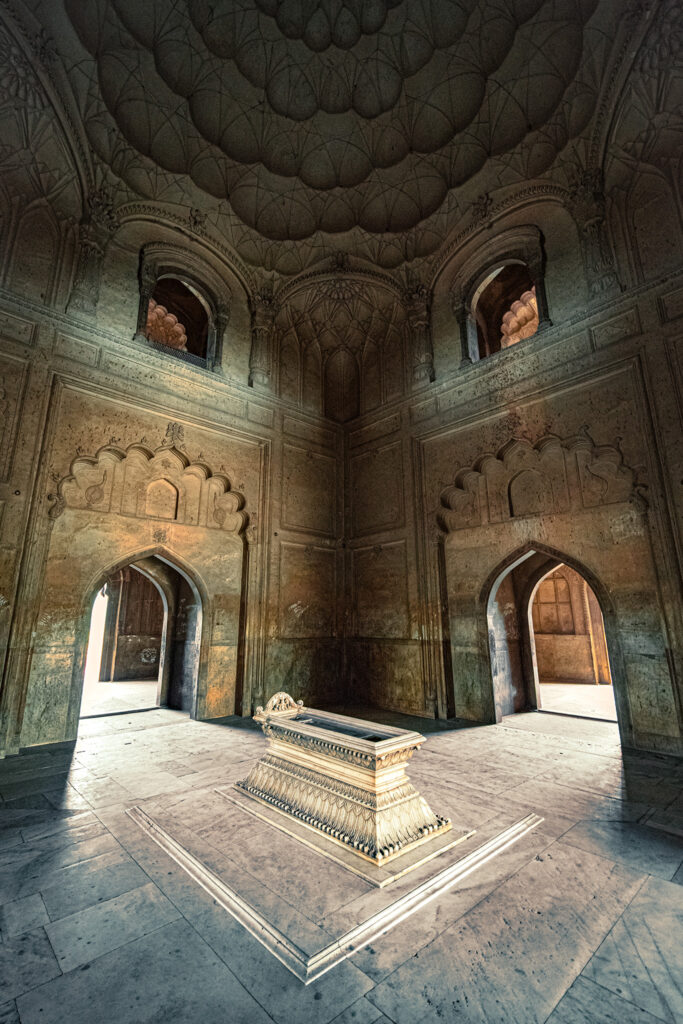
A hasht bihisht design in the center of a chahārbāgh-style garden. Heaven in the midst of Paradise, in other words, with the inevitable narrow but empty cenotaph below the celestial dome (the real grave hidden below, inaccessible but presumably with room to sit up when the angels Munkar and Nakir arrive to interrogate the deceased with the Three Questions).
In 1754 it was the very last-built of its monumental kind, as well as the first imperial Mughal garden-tomb to be dedicated to a non-emperor, the Nawab of Awadh, who in life had been the powerful Wazir to doomed Ahmad Shah Bahadur. What marble the monument incorporates was robbed from earlier structures; everything else is sandstone and stucco. It is regarded as a poor terminal example of its type, baroque if not decadently mannered, ill-proportioned compared to its austere and exactingly-dimensioned ancestors such as the Tomb of Humayun and the Taj Mahal. It’s not really on the general tourist’s bucket-list for the Indian capital.
So naturally I made it one of the first historic sites that I visited in Delhi.
Leave a Reply